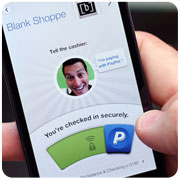
In an effort to boost adoption of Google Wallet, Google this week added features to the service that allow users to send money as an email attachment. The company is also trying to simplify the mobile payment process for consumers and businesses.
As a way to market the new features, Google Wallet payments via Gmail are being seeded out virally through an invite-by-payment activity.
Google Wallet integration into email is one of the more significant developments for the digital payment service. A dollar sign appears next to the attachment paper clip icon. Payments can be sent to repay a loan from a friend or pay to pay for goods such as an eBay transaction.
The new feature was discussed on the Official Gmail Blog and details were updated on the Google Wallet page.
For businesses, Google released two APIs. The Instant Buy API, which is discussed in a post on the Google Commerce blog, is an autofill type of feature that stores consumer information for easier mobile purchases. Instant Buy is meant to reduce shopping cart abandonment, which is a frequent problem for online retailers when consumers get bored with constantly entering credit card numbers and other information. The API is meant sit on top of an existing payment processor, and is intended to simplify the checkout experience.
A second API, Google Wallet Objects, was introduced on the Google Commerce blog. Objects helps merchants build loyalty programs for their customers. The feature allows for easy registration and fast checkout on Android devices.
Seeding Gmail Payments
Much in the same way that Gmail was introduced — with friends sending invitations to friends — Google Wallet payments via Gmail are also going the viral route, though these invitations come in the form of payments.
To kick off the news, Google sent all attendees of its I/O Conference this week US$10, which unlocked Google Wallet in Gmail for recipients. The hope is that these recipients will send payments to friends and get more people using Wallet.
Google has not set a date for when it plans to make Google Wallet for Gmail available to all users.
“We’re going to see how fast things grow,” Peter Hazlehurst, director of product management for Google Wallet told the E-Commerce Times. “For now we’re going to focus on the viral side of it.”
Peer-to-Peer Payments
Integration into Gmail is intended to spur adoption of Google Wallet. Building payments into email makes it easy for peer-to-peer payments.
“We’ve been very successful with Gmail,” said Hazlehurst. “Wouldn’t it be great if we could treat sending money between people as if it was a photo or an attachment? It’s all just done in-stream through your Gmail.”
The new feature is an attempt to make Google Wallet more competitive against more established digital payment services.
“The move to peer-to-peer, it’s somewhat targeted toward PayPal,” Jordan McKee, analyst at the Yankee Group told the E-Commerce Times. “I think also what Google is trying to do with that is essentially increase its user base, and increase the number of people using Google Wallet. Adoption isn’t really where they would like it to be, so they’re exploring other avenues.”
The new feature simplifies payments for consumers.
“Transferring money online can be a tricky process, one that’s full of multiple steps,” McKee said. “Google is making it as simple as attaching a document, a very seamless process, a very intuitive process.”
Business Integration
Instant Buy is another example of Google simplifying the process for businesses and consumers. Launch partners for the new API include Airbnb, Expedia, NFC Task Launcher, Pricelineand Uber, among a few others.
“This was pretty straightforward,” said Hazlehurst. “It allows the user to have all of their information already filled out. In one click or two clicks, instead of 20 or 30 keystrokes, you can make it much easier to buy things.”
The Google API “is also very interesting as far as purchasing things online especially from a mobile device,” said McKee. “It’s a very tedious process. Google’s solution is a way to bypass all of that mess, a way to make transactions on the web and mobile commerce transactions.”
A separate API allows for businesses to integrate loyalty programs.
“It’s always been a challenge for the user to remember all of their information. We’re helping them store all of their loyalty cards. At the same time we’re helping the merchants. We know that a loyal customer is the customer they want to have come back to the store,” said Hazlehurst.
The user gets to set parameters — businesses can send messages with deals, or the user can initiate contact.
“We’re making it easy for the merchant, with the user’s permission, to reach out,” Hazlehurst said.
“As far as loyalty, that’s a really big part of mobile payments,” said McKee. Mobile wallets have struggled for adoption, but there are some enticing qualities. “When you start to offer loyalty and couponing, that’s where things get interesting.”
Securing Your Wallet
A lot has been done to make mobile payments secure, but questions still exist.
“It’s an interesting topic for mobile payments. A lot of people have concerns for mobile payments, and a lot of these concerns are false,” said McKee. “The industry has failed to effectively address this issue.”
It may, in fact, be a more secure form of payment because of extra precautions. Several security factors include the ability to password protect, and to wipe information from an account remotely when necessary.
“Mobile payments,” he said, “trump traditional payments in terms of security.”





















































I feel like this is just opening up doors for hackers. If someone loses their password, they could lose a lot of money. I think it’s better to have the gmail and google wallet seperate. Therefore, if someone steals your google wallet password, you can still recover it through gmail. However, if you lose both, you could be in serious trouble.